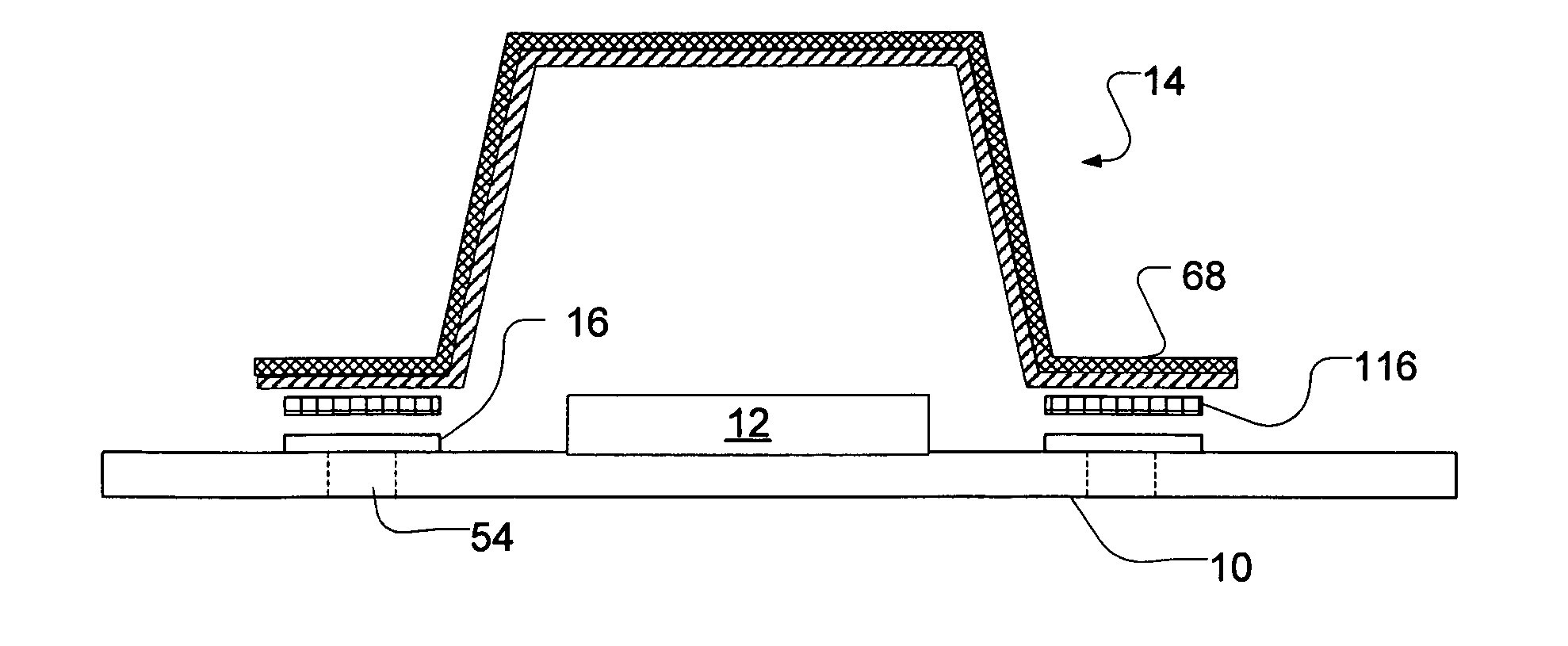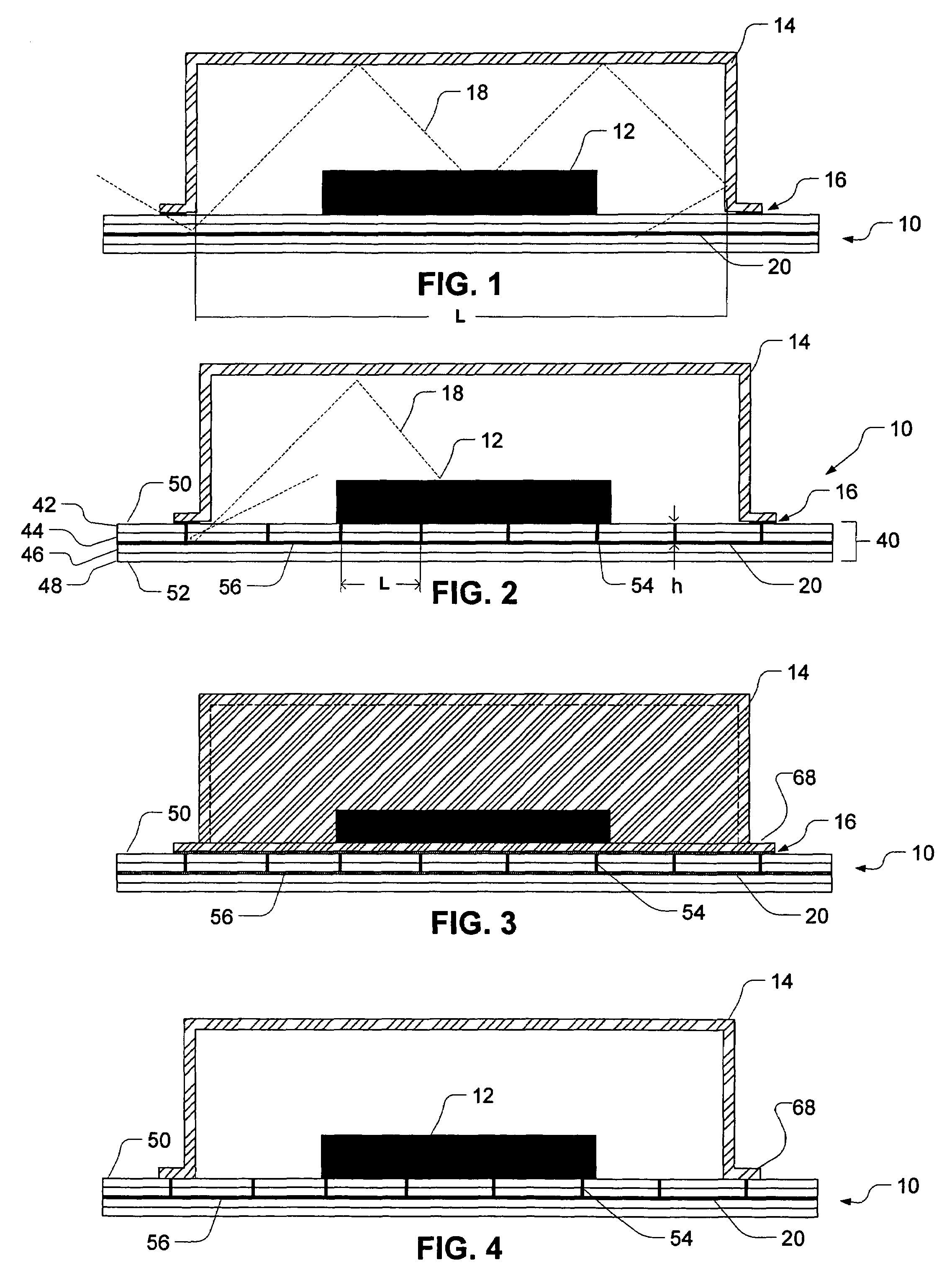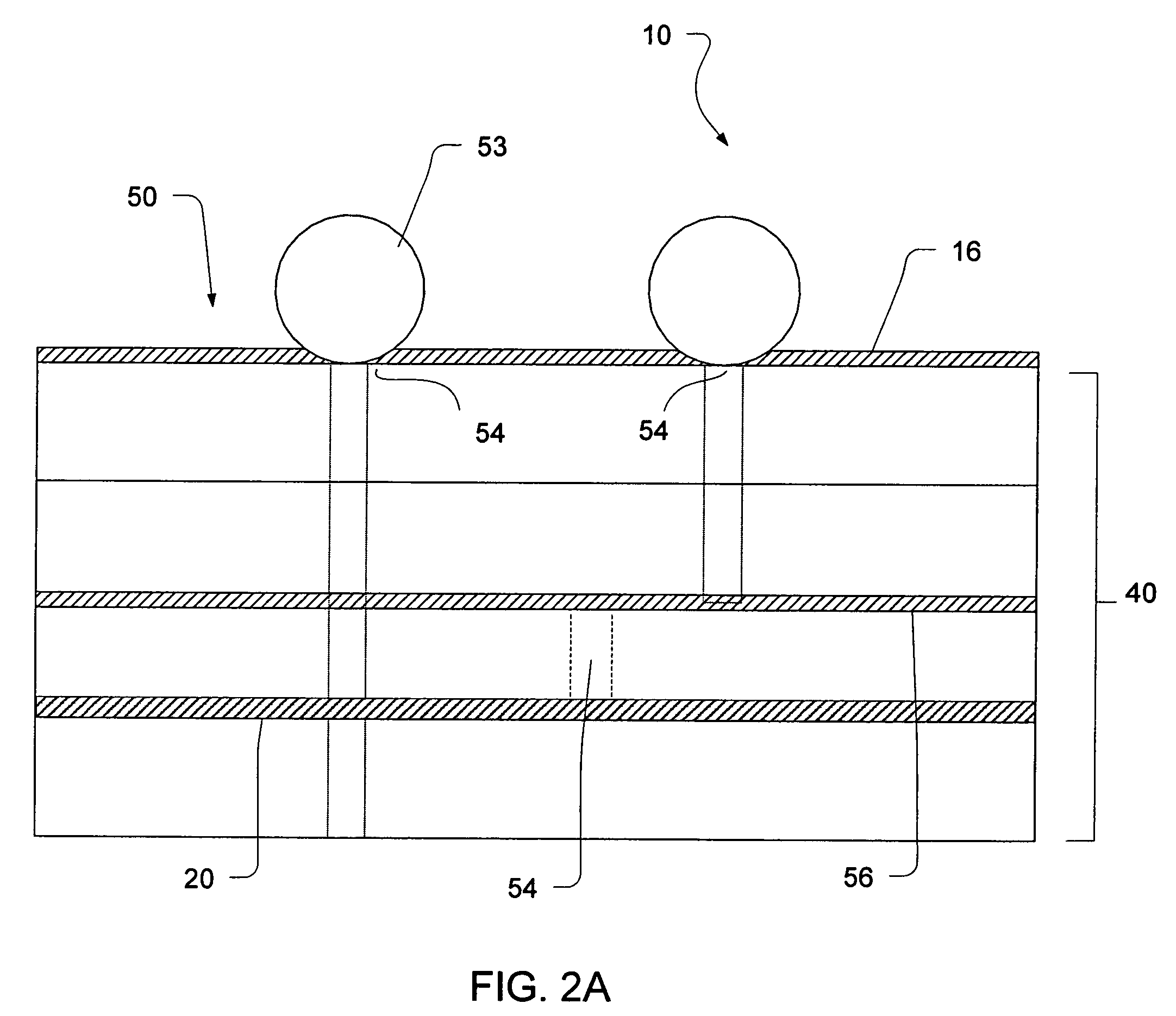Electromagnetic interference shielding for a printed circuit board
a technology of printed circuit board and electromagnetic interference, which is applied in the direction of localised screening, electrical apparatus construction details, and semiconductor/solid-state device details, etc., can solve the problems of increasing the cost of manufacturing electronic equipment such as cell phones, personal digital assistants, and high cost of existing solutions, so as to reduce the amount of electromagnetic interference
- Summary
- Abstract
- Description
- Claims
- Application Information
AI Technical Summary
Benefits of technology
Problems solved by technology
Method used
Image
Examples
Embodiment Construction
[0064]The present invention provides improved printed circuit boards, electronic devices, and EMI shielding, and methods of manufacturing the improved printed circuit boards, electronic devices, and EMI shielding.
[0065]FIGS. 2 and 3 illustrate a printed circuit board printed circuit board 10 that is encompassed by the present invention. Printed circuit board 10 comprises conductive traces superimposed or printed on one or both surfaces (not shown) and may also contain internal signal layers (not shown), power planes (not shown) and one or more ground planes 20. Printed circuit board 10 comprises one or more layers of insulative organic or inorganic material containing the pattern(s) of conductive traces. Printed circuit board 10 becomes an electrical circuit when electronic components 12 are attached to one of the printed circuit board's surfaces and leads from the electronic component are contacted with the conductive traces.
[0066]While printed circuit board 10 may be composed of a...
PUM
 Login to View More
Login to View More Abstract
Description
Claims
Application Information
 Login to View More
Login to View More - R&D
- Intellectual Property
- Life Sciences
- Materials
- Tech Scout
- Unparalleled Data Quality
- Higher Quality Content
- 60% Fewer Hallucinations
Browse by: Latest US Patents, China's latest patents, Technical Efficacy Thesaurus, Application Domain, Technology Topic, Popular Technical Reports.
© 2025 PatSnap. All rights reserved.Legal|Privacy policy|Modern Slavery Act Transparency Statement|Sitemap|About US| Contact US: help@patsnap.com



